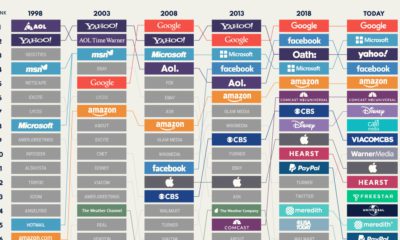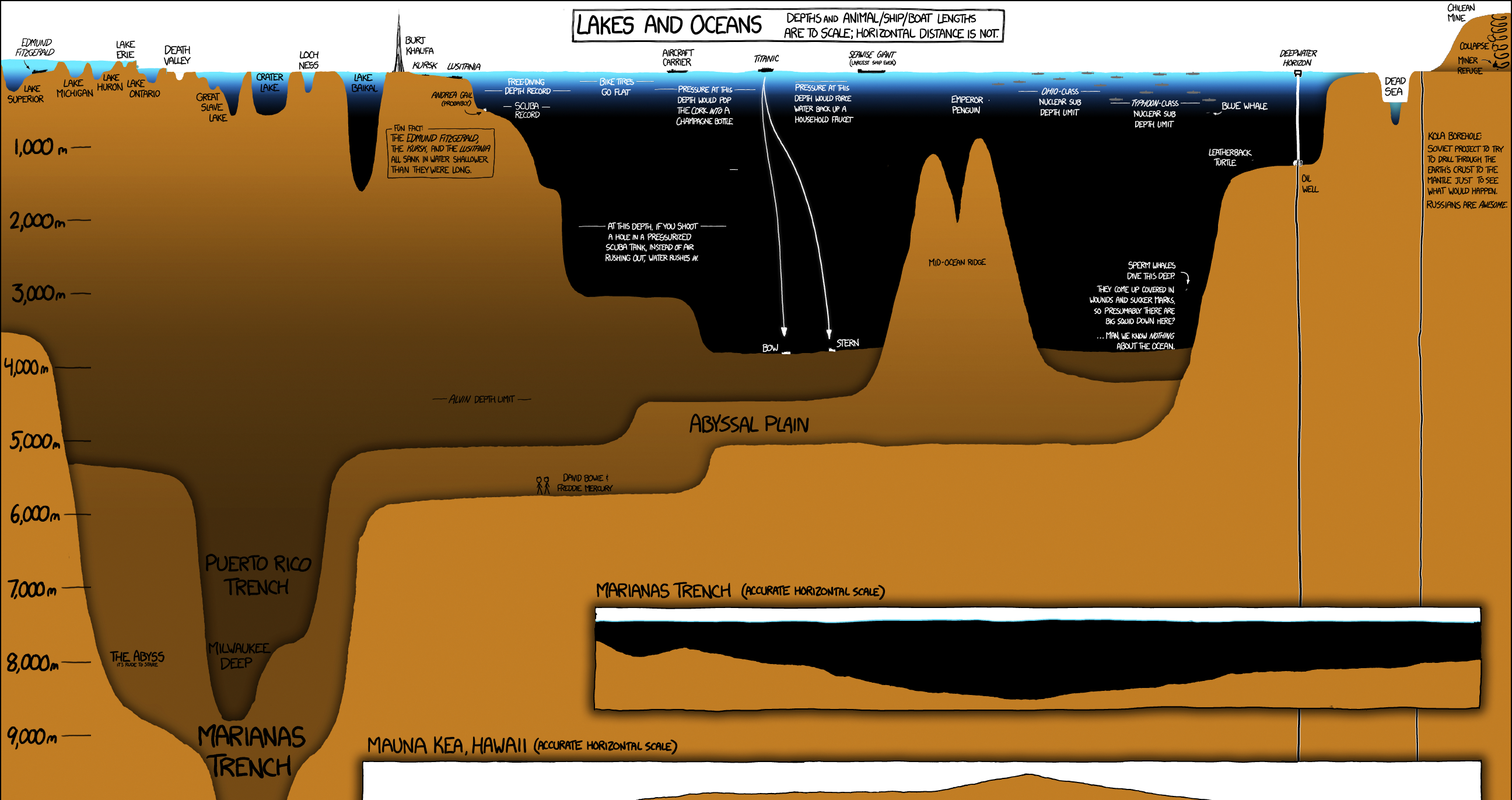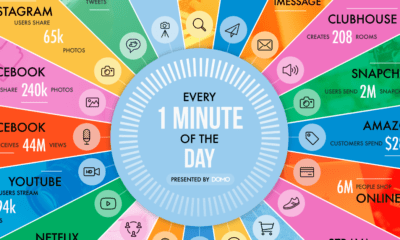Technology
Map: The World’s Network of Submarine Cables
View the full version of this graphic.
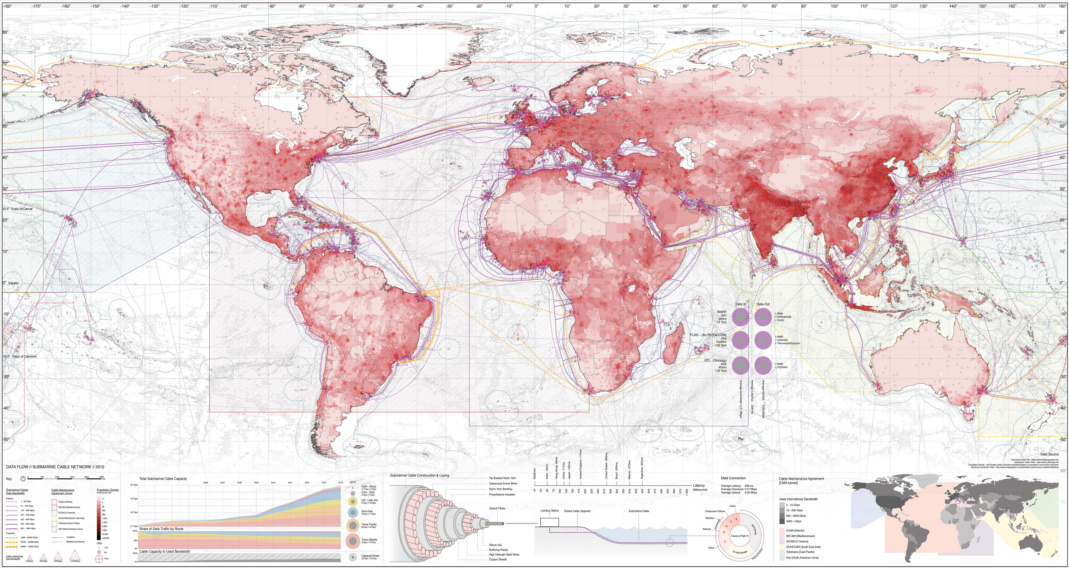
Map: The World’s Network of Submarine Cables
View the above visualization at full resolution for the best experience.
Submarine cables are decidedly uncool. But while they lack the flashiness of satellites, it’s actually the world’s vast network of fiber optic cables that does most of the heavy lifting in keeping our information flowing from place to place.
The map above, by Ben Pollock, is a comprehensive look at the world’s cable network, as well as some of the impressive information on bandwidth and maintenance jurisdictions.
The History of Submarine Cables
The first transcontinental cable – laid in 1858 – ran from Ireland to Newfoundland, and made telegraph communication possible between England and Canada.
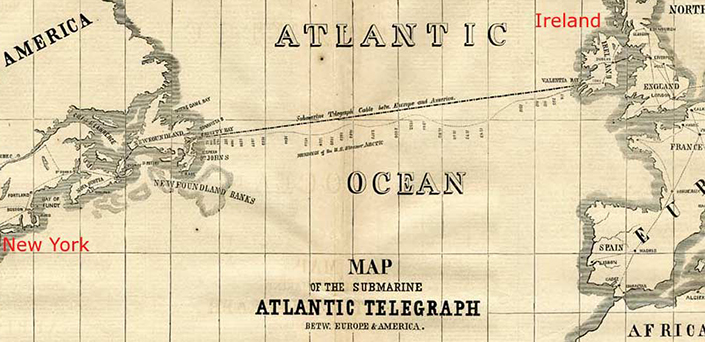
Though communication was expensive and limited to only a few words per hour at best, the speed of communication was unparalleled at the time.
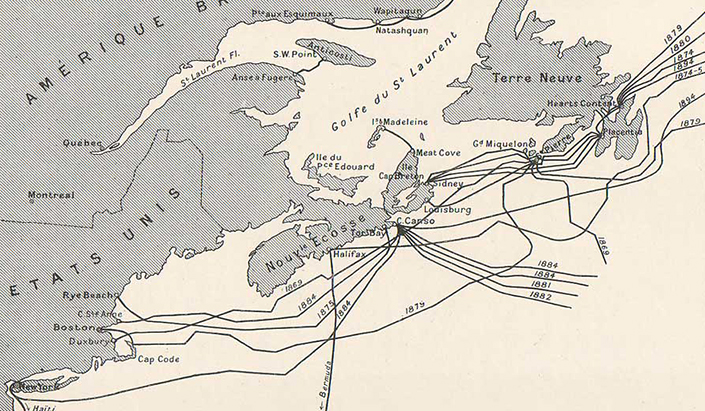
“Instant” communication was a huge commercial hit, and it prompted a cable laying boom. By the year 1900, there were already over 130,000 miles (200,000 km) of cable running along the ocean floor!
Beyond the Telegram
The first transatlantic telephone cables went into service in 1956, and 32 years later, the first fiber optic cable connected Europe and America.
Fiber optic technology made transmitting massive quantities of information fast and cost-effective. The level of speed has only increased with time – and now cables can transmit 160 terabits per second.
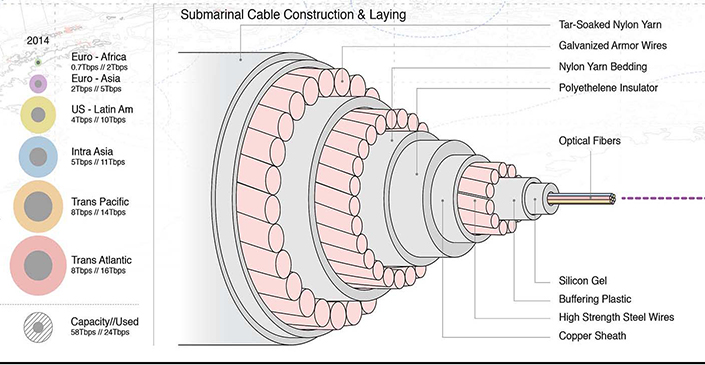
(One common misconception is that most of our information is transmitted through satellites, but fiber optic cables actually form the backbone of the internet, transmitting about 99% of all data.)
Today, there are over 420 submarine cables in service, stretching over 700,000 miles (1.1 million km) around the world. The network is clustered around information economy hotspots like Singapore and New York, but cables connect to just about anywhere.
Remote Pacific islands, and even obscure ocean towns in the Arctic Circle have such connections.
Who’s Footing the Bill?
Traditionally, private companies or consortiums formed by telecom carriers owned cables, but that model is changing. Content providers such as Google and Microsoft are increasingly major investors in new cable. Cloud computing is the big demand driver of this new private cable boom.
As more millions more people around the world adopt cloud computing, we’ll be certain to see even more cables criss-crossing the world’s oceans in the near future.
Brands
How Tech Logos Have Evolved Over Time
From complete overhauls to more subtle tweaks, these tech logos have had quite a journey. Featuring: Google, Apple, and more.

How Tech Logos Have Evolved Over Time
This was originally posted on our Voronoi app. Download the app for free on iOS or Android and discover incredible data-driven charts from a variety of trusted sources.
One would be hard-pressed to find a company that has never changed its logo. Granted, some brands—like Rolex, IBM, and Coca-Cola—tend to just have more minimalistic updates. But other companies undergo an entire identity change, thus necessitating a full overhaul.
In this graphic, we visualized the evolution of prominent tech companies’ logos over time. All of these brands ranked highly in a Q1 2024 YouGov study of America’s most famous tech brands. The logo changes are sourced from 1000logos.net.
How Many Times Has Google Changed Its Logo?
Google and Facebook share a 98% fame rating according to YouGov. But while Facebook’s rise was captured in The Social Network (2010), Google’s history tends to be a little less lionized in popular culture.
For example, Google was initially called “Backrub” because it analyzed “back links” to understand how important a website was. Since its founding, Google has undergone eight logo changes, finally settling on its current one in 2015.
| Company | Number of Logo Changes |
|---|---|
| 8 | |
| HP | 8 |
| Amazon | 6 |
| Microsoft | 6 |
| Samsung | 6 |
| Apple | 5* |
Note: *Includes color changes. Source: 1000Logos.net
Another fun origin story is Microsoft, which started off as Traf-O-Data, a traffic counter reading company that generated reports for traffic engineers. By 1975, the company was renamed. But it wasn’t until 2012 that Microsoft put the iconic Windows logo—still the most popular desktop operating system—alongside its name.
And then there’s Samsung, which started as a grocery trading store in 1938. Its pivot to electronics started in the 1970s with black and white television sets. For 55 years, the company kept some form of stars from its first logo, until 1993, when the iconic encircled blue Samsung logo debuted.
Finally, Apple’s first logo in 1976 featured Isaac Newton reading under a tree—moments before an apple fell on his head. Two years later, the iconic bitten apple logo would be designed at Steve Jobs’ behest, and it would take another two decades for it to go monochrome.
-

 Maps1 week ago
Maps1 week agoThe Largest Earthquakes in the New York Area (1970-2024)
-

 Money2 weeks ago
Money2 weeks agoWhere Does One U.S. Tax Dollar Go?
-

 Automotive2 weeks ago
Automotive2 weeks agoAlmost Every EV Stock is Down After Q1 2024
-

 AI2 weeks ago
AI2 weeks agoThe Stock Performance of U.S. Chipmakers So Far in 2024
-

 Markets2 weeks ago
Markets2 weeks agoCharted: Big Four Market Share by S&P 500 Audits
-

 Real Estate2 weeks ago
Real Estate2 weeks agoRanked: The Most Valuable Housing Markets in America
-

 Money2 weeks ago
Money2 weeks agoWhich States Have the Highest Minimum Wage in America?
-

 AI2 weeks ago
AI2 weeks agoRanked: Semiconductor Companies by Industry Revenue Share







